How to get this classic Sega-inspired synth for free and use it to create next level chiptune sounds
If you're regularly making chiptune tracks, or just want to infuse some retro video game flavours, this ultra-fun synth is a mega option
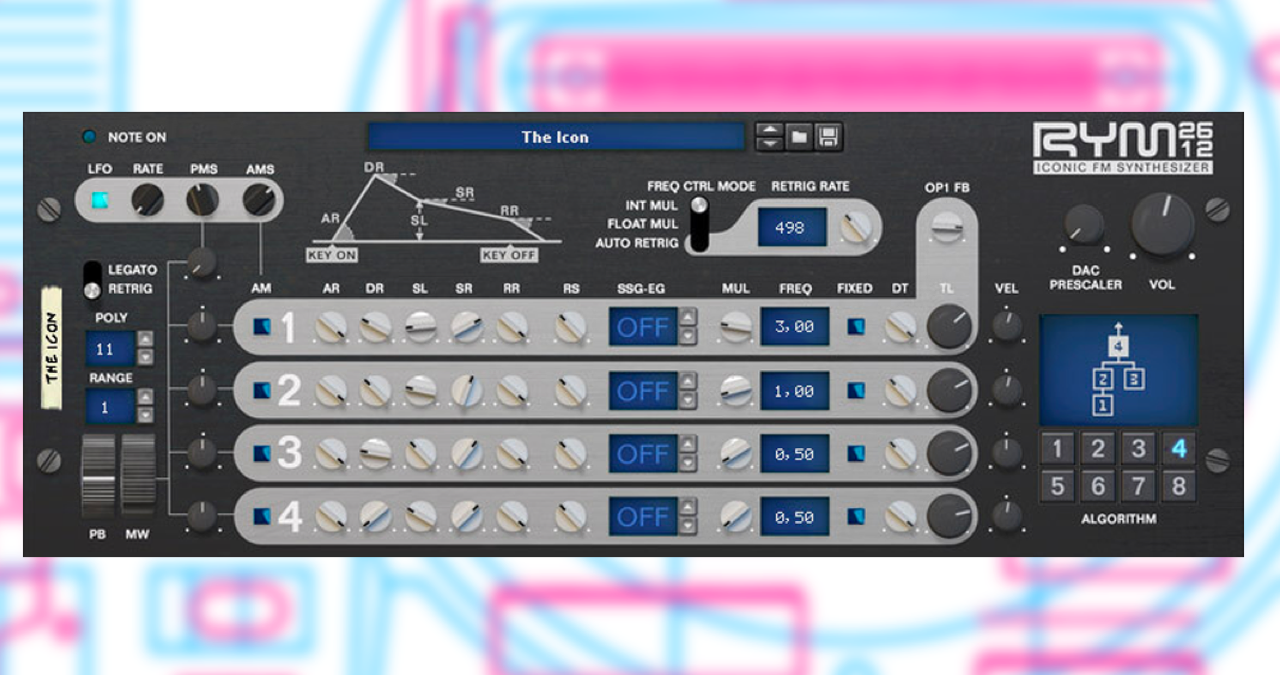
Chiptune is a genre that developed from reusing the onboard synth generation chips in classic gaming consoles such as Nintendo's Game Boy. Nowadays, we can use any number of software synths to create chiptune-like sounds, but this process is simpler and more authentic if we have an instrument inspired by those classic consoles.
Back in the day (the 1990s) the Sega Mega Drive/Genesis consoles included a full on FM synth to produce their musical sounds.
In a fortuitous turn of events software developers Inphonik decided to create their very own software version. RYM2612 is an accurate emulation of this FM classic, and in this tutorial we’re taking a look at the kind of chiptune sounds we can achieve.
You can grab Inphonik's RYM2612 for free when you pick up a back issue of (the now sadly closed) Computer Music's issues 339 or 340 either in print or digital and using the instructions inside to access a free full version via the CM Plugin Suite.
(Make the following tutorial images larger by right clicking and selecting 'Open Image in New Tab')
Creating chiptune sounds with RYM2612
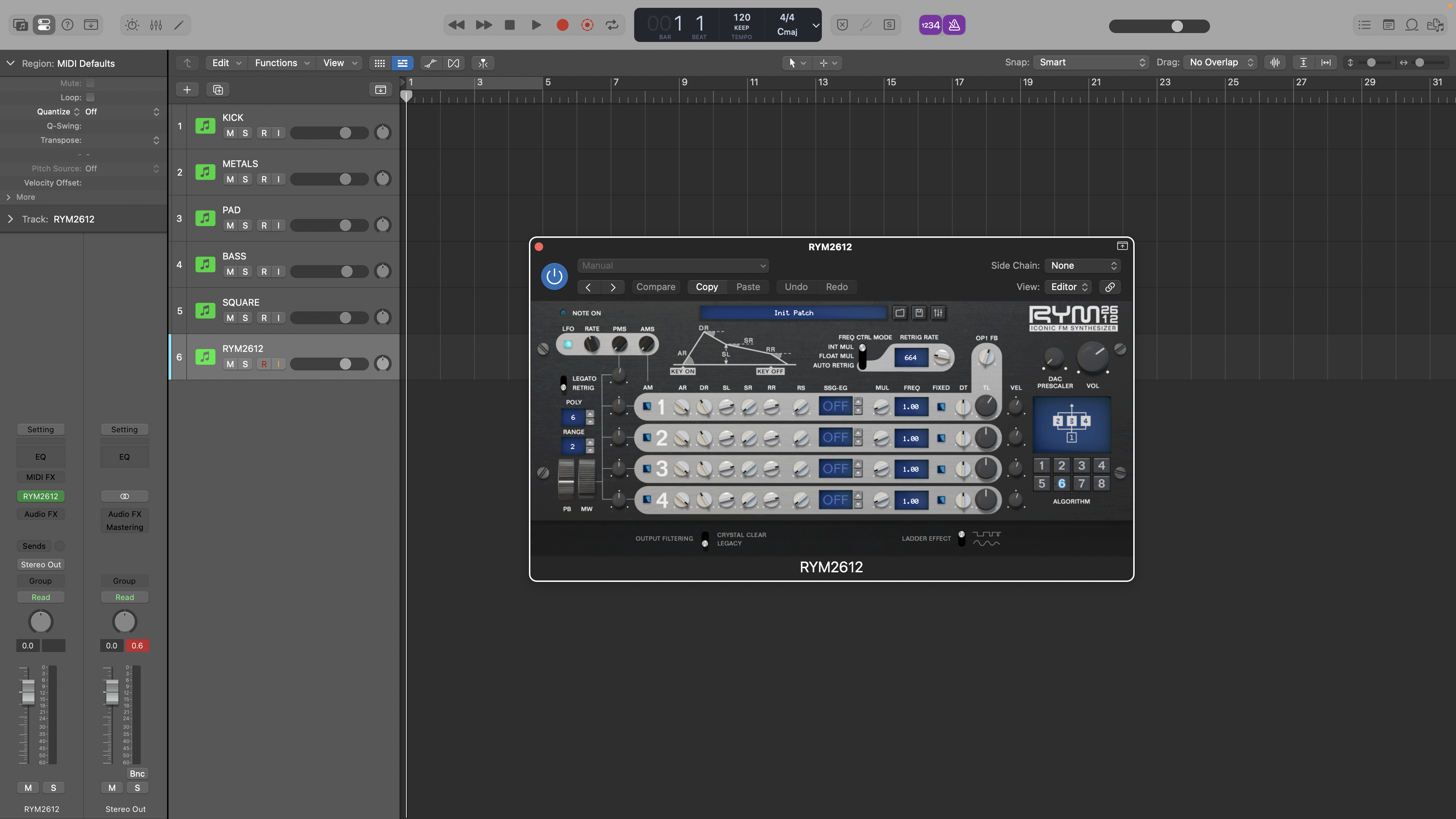
1. The Sega Mega Drive/Genesis’s 16-bit stereo sound generation heralded a new era for gaming sounds, broadening the palette by using Yamaha’s FM based YM2612 synth chip. Inphonik’s RYM2612 allows us to recreate these sounds complete with original sonic imperfections, and as we’ll see later also import them from existing music files.
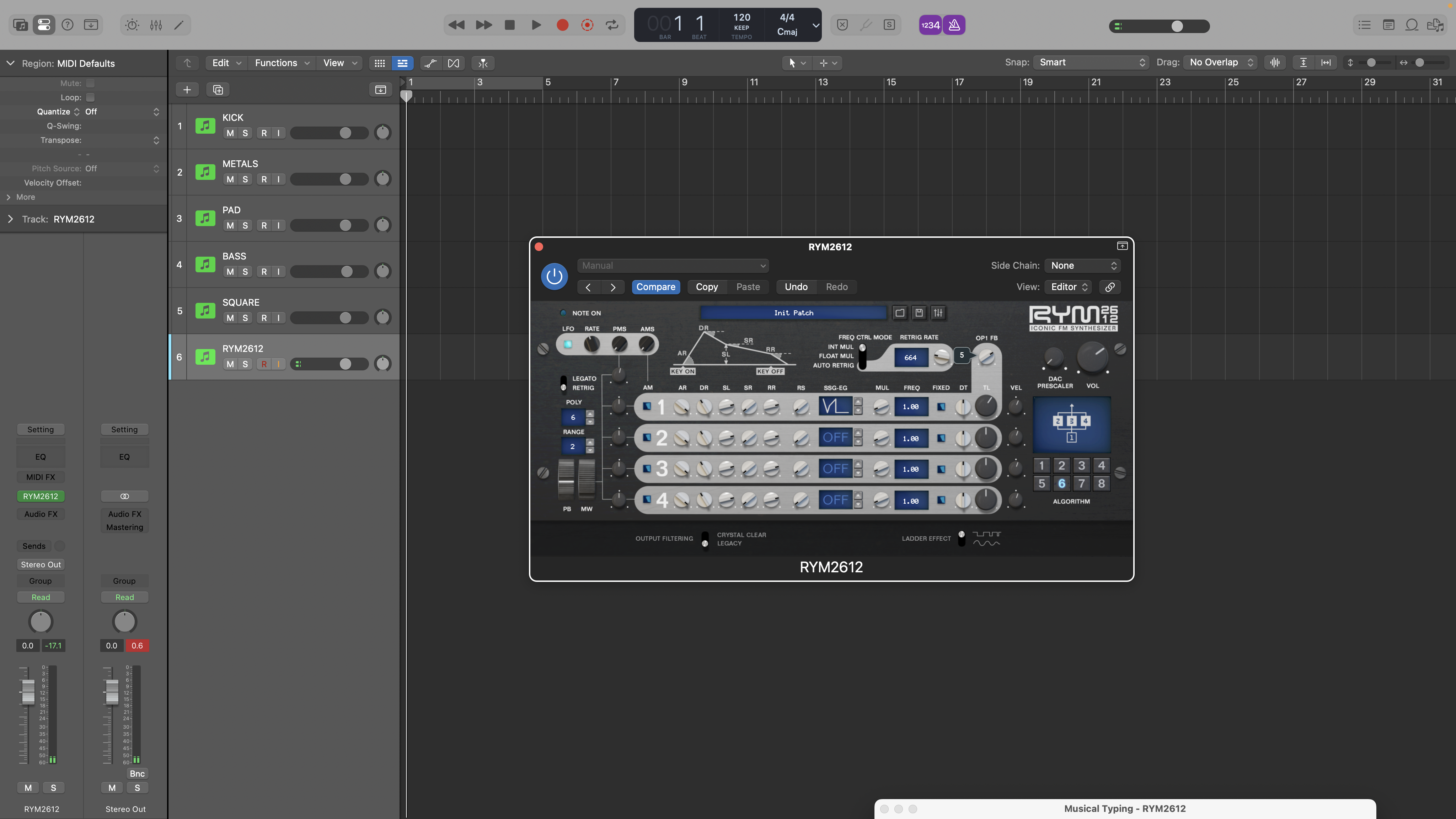
2. Let’s start with a typical toy-like pad sound. Algorithms 5 and 6 (we’re using 6) are both good for this. The starting point and key tone is operator 1, and we modify this by increasing the OP1 feedback to setting 5 for a more buzzy tone. For operator 1 we also select the inv + held SSG playback option - drag inside the little window to choose this.
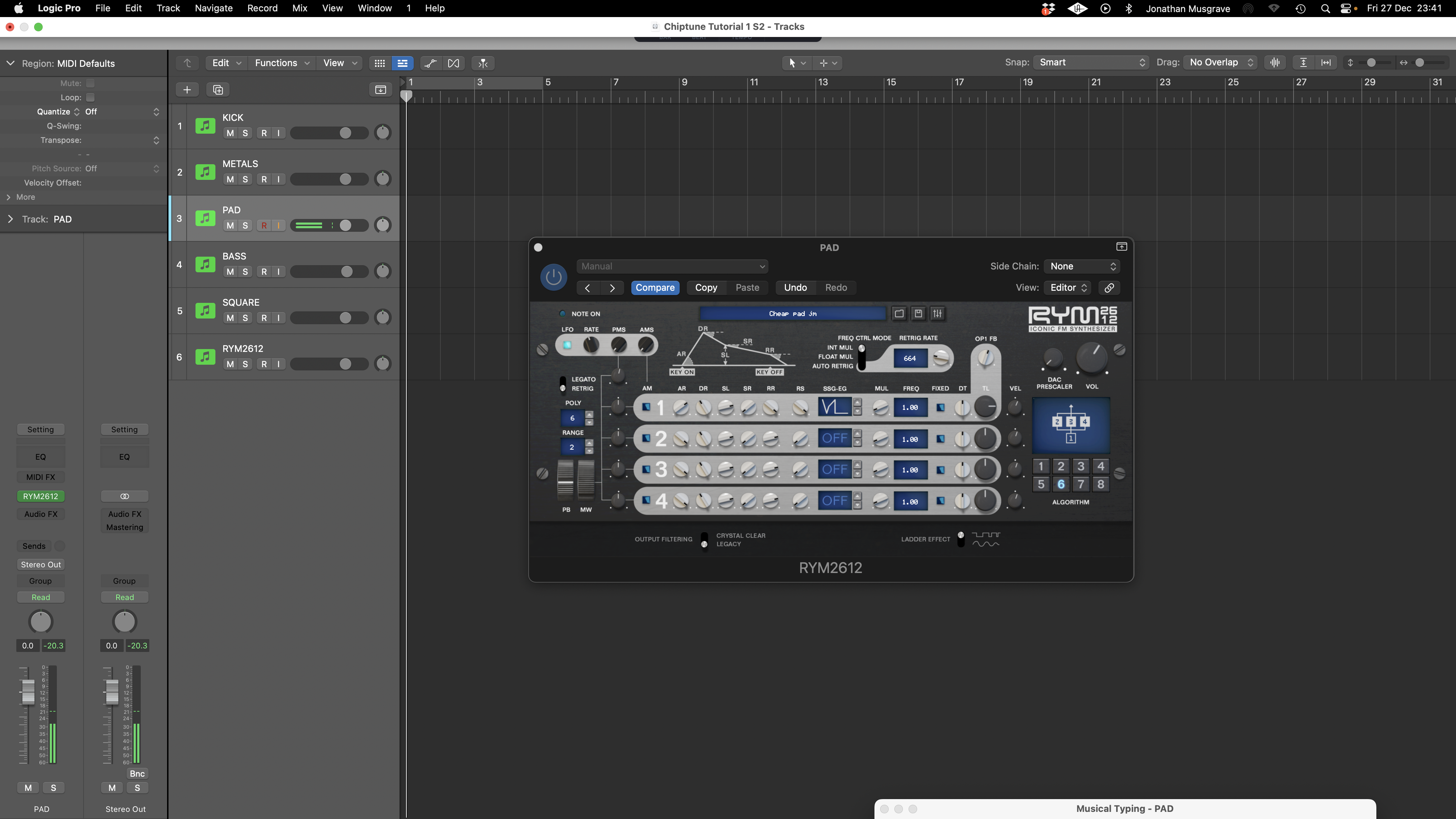
3. The remaining 3 operators all have identical parameters, including no pitch (Freq) offsets or detune (DT). The overall sound is also heavily defined by operator 1’s envelope. Try these settings - AR 22, DR 12, SL 12, SR 0, RR 15 and RS 3. To finish the sound, engage the Legacy output filtering for a darker overall tone.
Get the MusicRadar Newsletter
Want all the hottest music and gear news, reviews, deals, features and more, direct to your inbox? Sign up here.
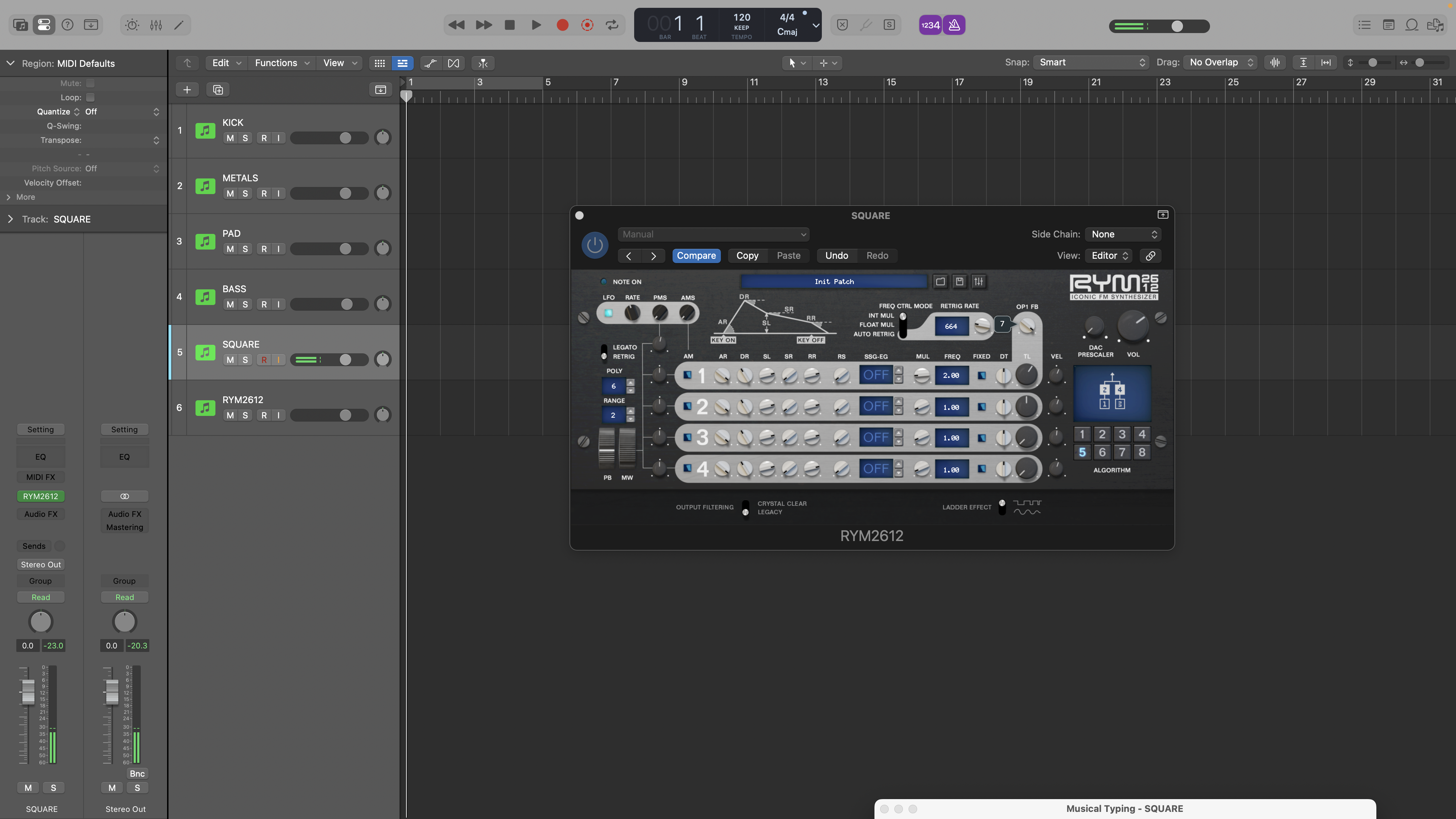
4. Choppy square wave sounds are a very common chiptune tone. Despite the sine wave building blocks, we can still create these in RYM2612. Algorithms 5, 6 or 7 work well (we’re using 5). Here we’ve turned down operators 3 & 4, and set operator 1 frequency ratio to 2.0 and OP1 feedback to its max (7).
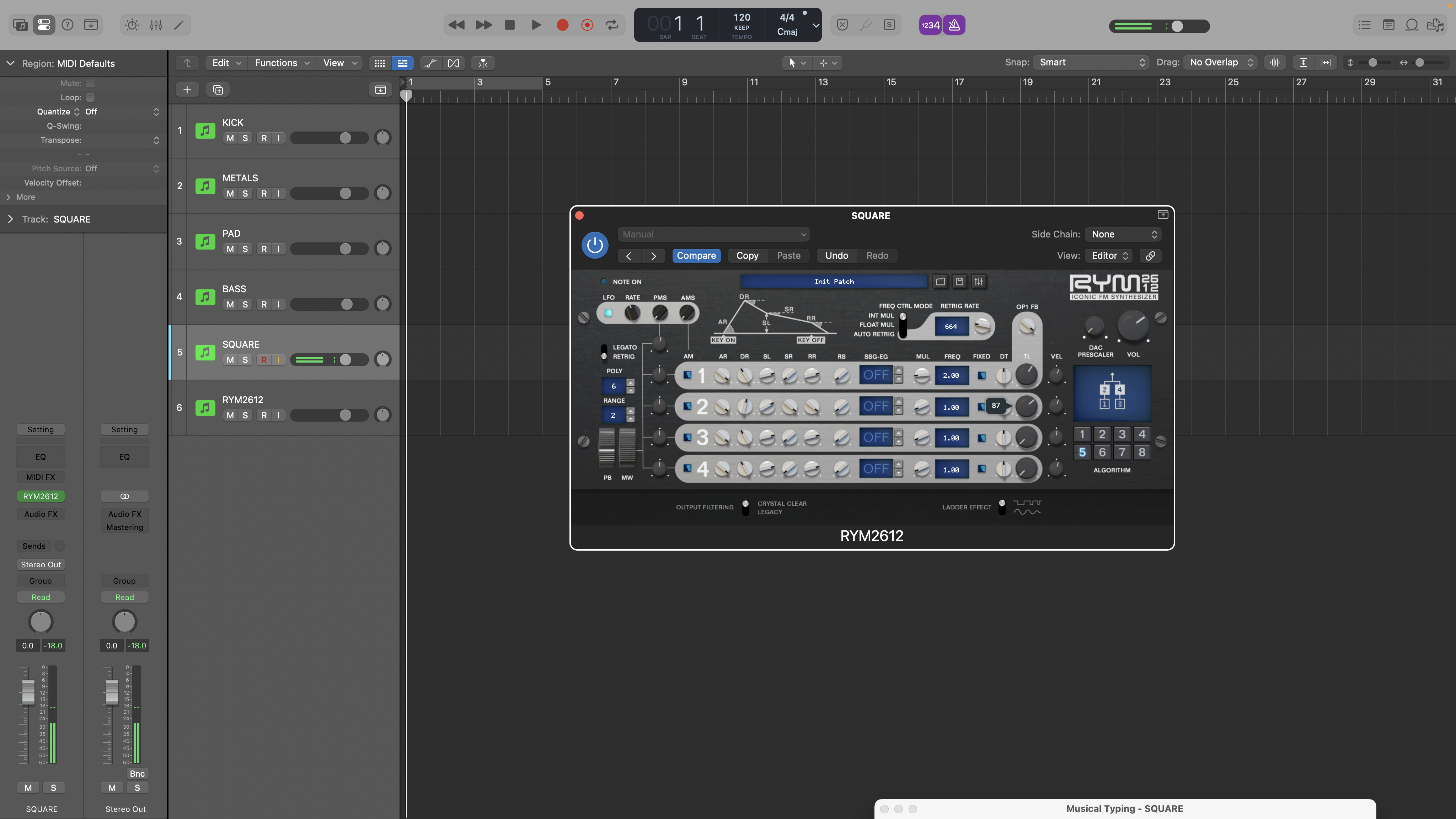
5. Operator 2 frequency ratio is set to 1.0 and we then use operator 2’s envelope to shape the required choppy decay. Settings are AR 31, DR 17, SL 11, SR 31, RR 15 and RS 0. For an overall brighter tone select the Crystal Clear output filtering, and choose the Legacy option for a darker sound.
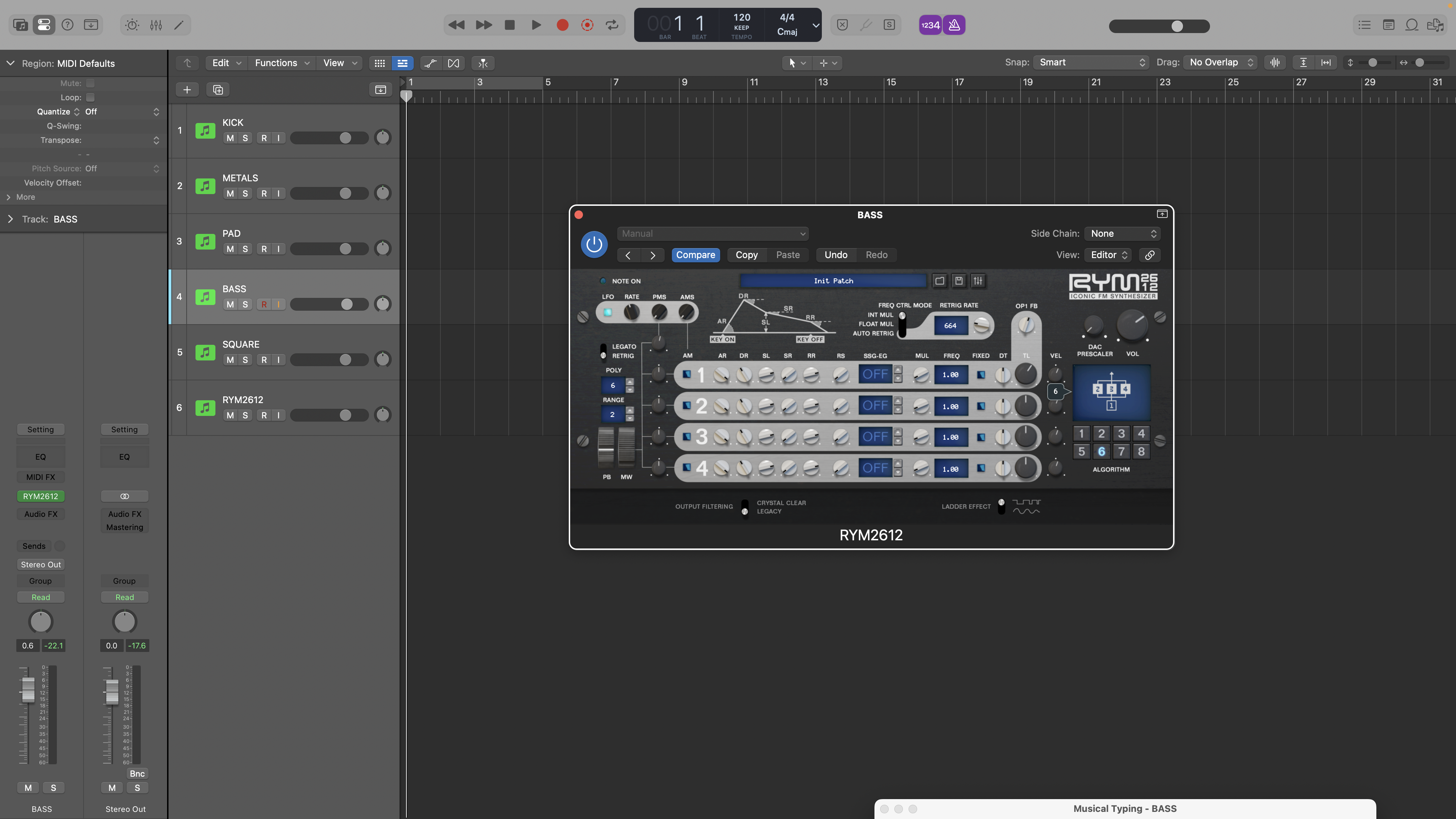
6. For bass we need a solid rounded sound that works with fast-paced music and can also play a melodic and rhythmic role. Algorithm 6 works very well and here operators 2, 3 and 4 are all connected to the output. All thus influence the final sound balance so will need balancing accordingly.
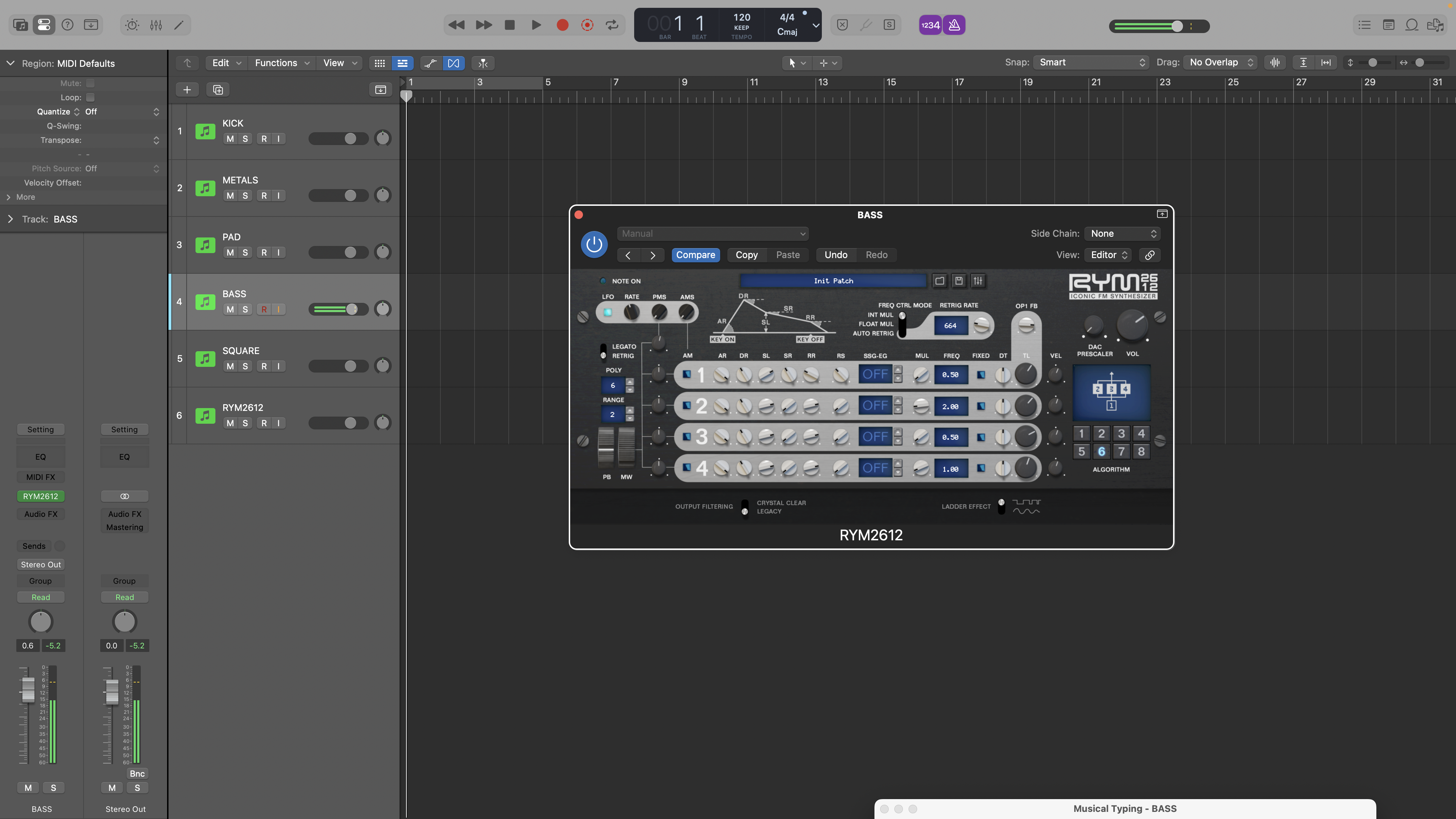
7. Operator 1 frequency is set to the minimum ratio (0.50) and the envelope tweaked for the required shape. Here our settings are AR 31, DR 12, SL 11, SR 12, RR 4 and RS 1. We can also use the OP1 feedback to add a bit of edge (ours is set to 6). To complete the sound try some frequency offsets for the other operators and balance their levels to taste
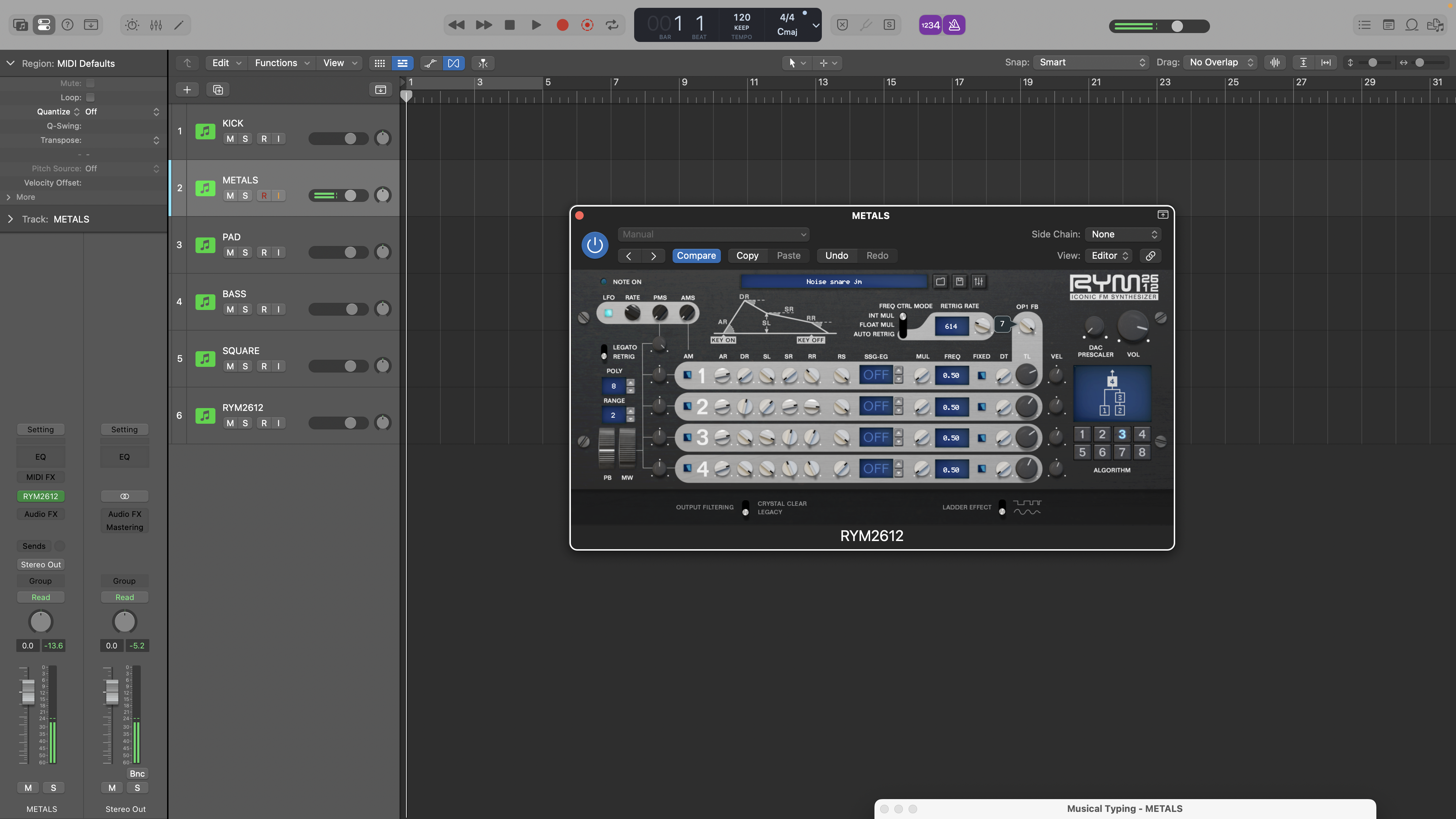
8. Although we might typically opt for some classic 8-bit beat samples for our chiptune track, the FM engine in RYM2612 can actually deliver a few quite interesting percussive sounds. For metallic sounds the operator 1 feedback works well. Here we’ve used algorithm 3, maximum operator 1 feedback (7), adjusting operator 4’s sustain rate for the desired decay.
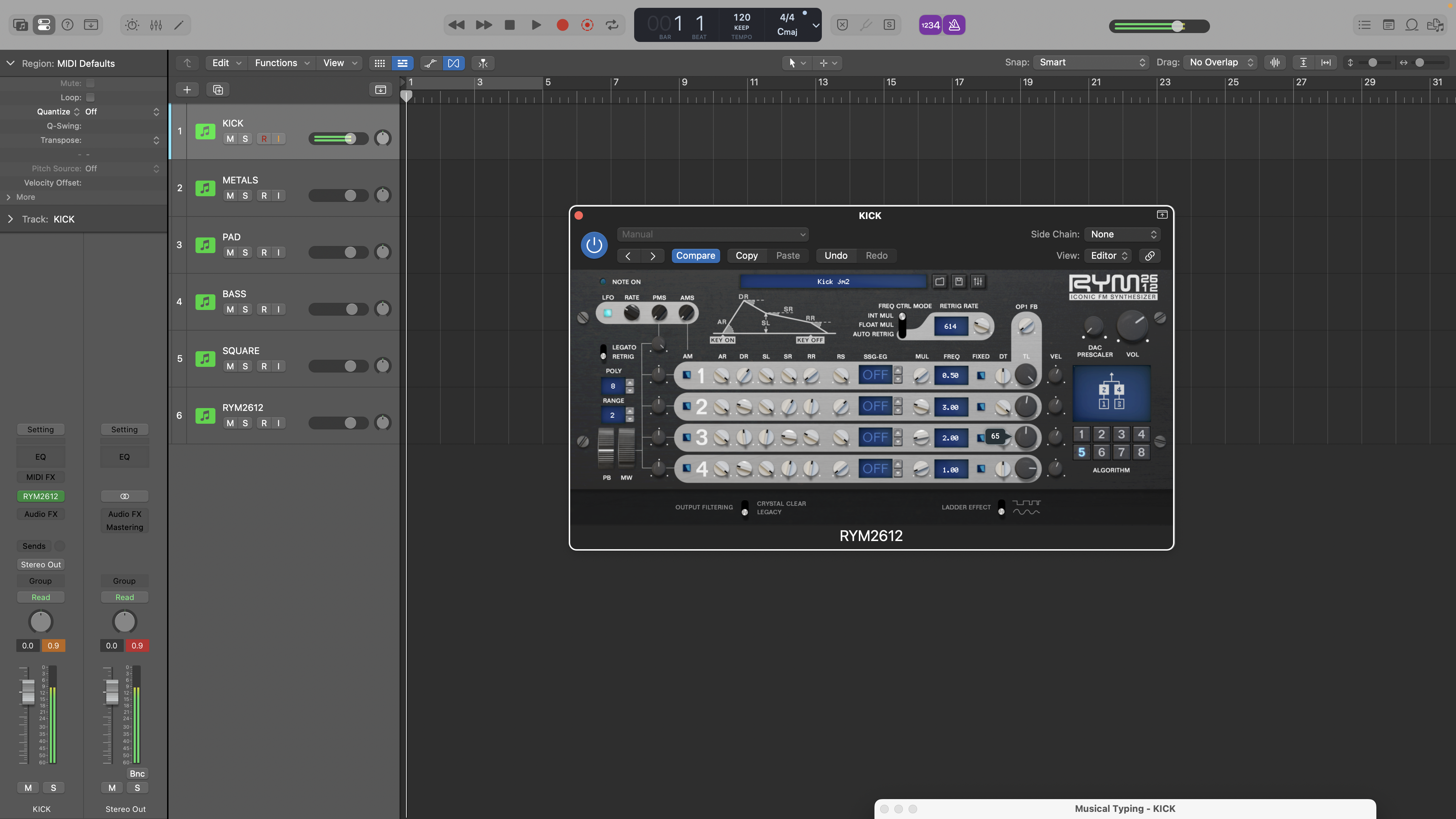
9. For a drum sound, algorithm 5 works well. Set operator 1 frequency for the fundamental tone (0.5) and with maximum level. Use operator 3 frequency ratio for the upper body tone (2.0) setting level to taste. Now, if you blend in operator 2 with a higher frequency ratio (3.0) this adds attack.
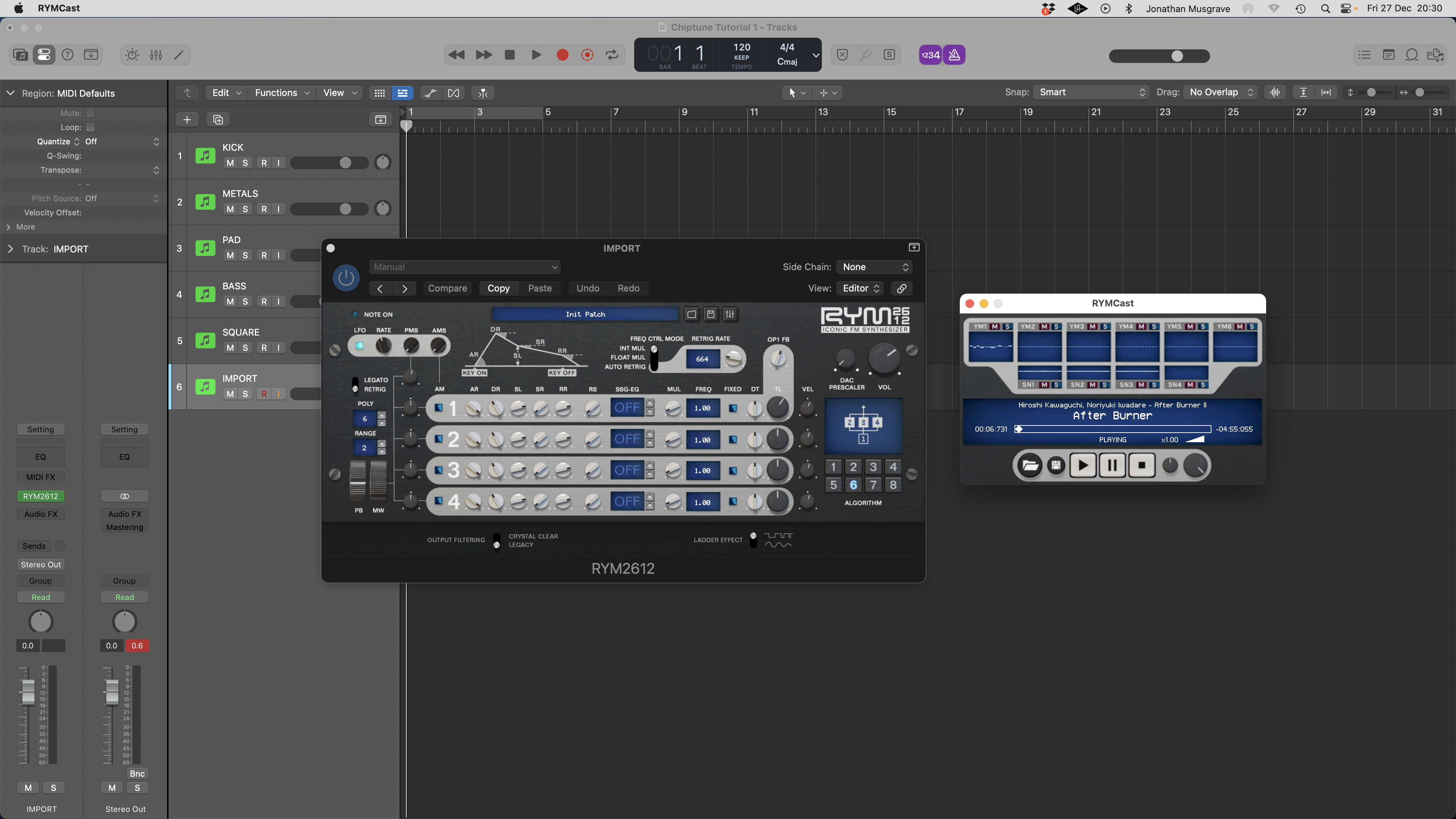
10. Finally, if you’re still looking for inspiration, RYM2612 can also create presets from VGM/VGZ (video game music) files. These are the files that hold the music information for the original games. All you need is to download the free RYMCast player from Inphonik, open up a suitable VGM/VGZ file and then drag the synth parts into RYM2612.
Jon is a London based platinum award winning mixer, producer, composer and club remixer with a diverse CV that spans dance, pop, rock and music for media. He’s also a long term contributor to MusicRadar's music technology tutorials and reviews. Whether working alone or collaborating he usually handles final mixdowns, so you’ll also find MusicRadar peppered with his handy mixing tips.
"There’s plenty for us guitarists to learn – and ‘less is more’ is the overriding lesson": how to play like George Harrison on The Beatles' Abbey Road
“How daring to have a long intro before he’s even singing. It’s like psychedelic Mozart”: With The Rose Of Laura Nyro, Elton John and Brandi Carlile are paying tribute to both a 'forgotten' songwriter and the lost art of the long song intro










